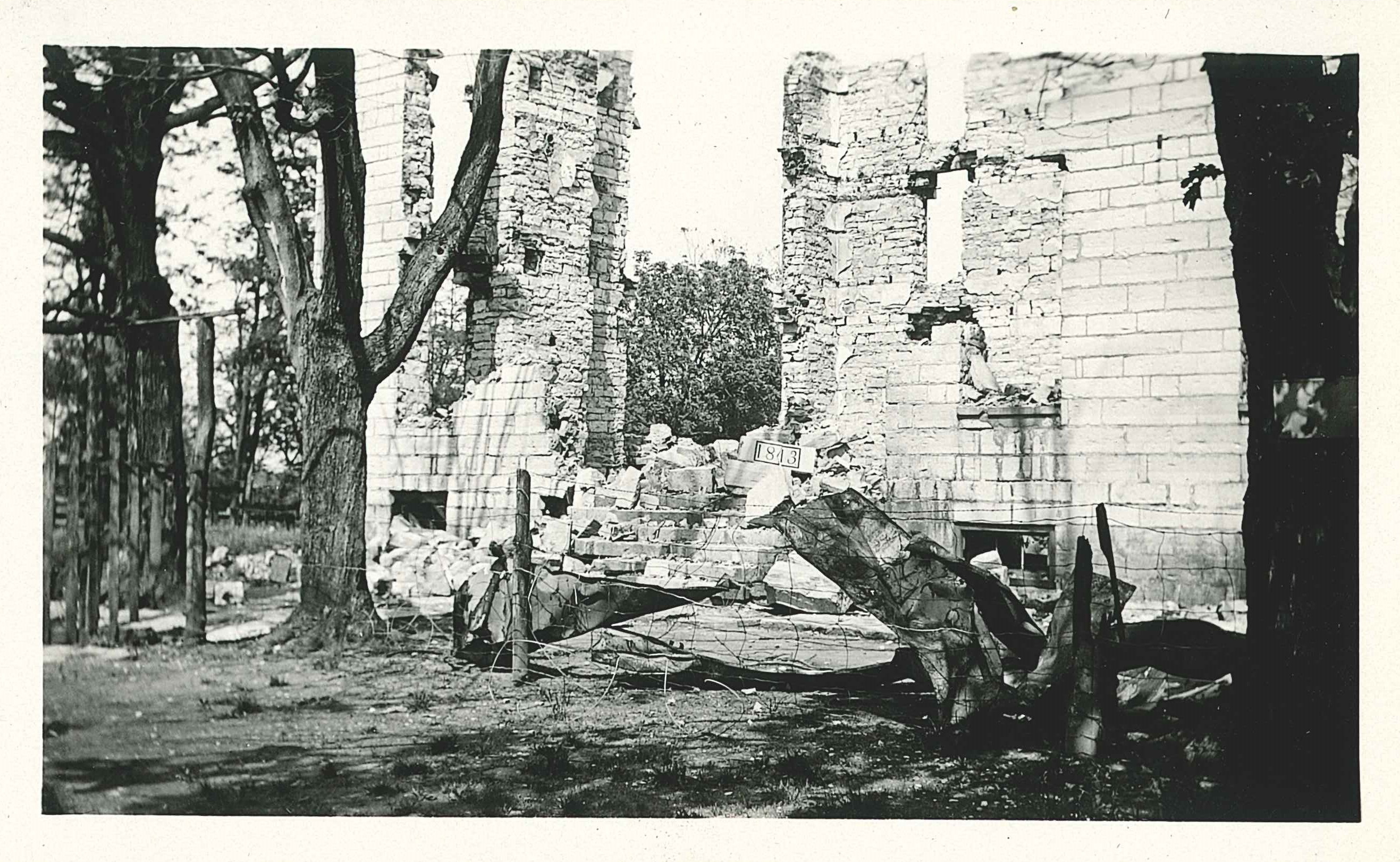In the changing historic landscape of Pleasant Hill, buildings came and buildings went. It’s impossible to view the photographic and archival evidence without getting the impression that this place used to look a lot different than it does today (an understatement, I know). Personally, I’ve always been impressed with the imposing presence that the 2nd Centre Family Dwelling (built 1812-1815) casts in the historic photos of the village. If you want to learn a little more about this building, I encourage you to visit the exhibit in the Farm Deacon’s Shop (incidentally, this dwelling stood just to the north of this spot).
The 1813 Centre Family Dwelling had a long, productive life at Pleasant Hill that was tragically cut short by a fire in 1932. Here’s how it was described in the March 4, 1932, account from the Harrodsburg Herald:
A spectacular fire that threatened to wipe out a large portion of historic Shakertown, started Tuesday night about eleven o’clock in one of the oldest and handsomest of the splendid buildings. It was occupied by three families, two of which lost their entire possessions. Several other buildings were threatened, but were saved by the Harrodsburg fire company in charge of Chief K. B. Phillips, assisted by volunteers, who got on the roofs of the threatened buildings and swept off the sparks as they fell. The Pennebaker Home for Girls caught on fire several times, chiefly from dried leaves in the gutters, but the blazes were extinguished before any damage was done.
…
The burned building was erected in 1813, according to the date on the stone structure. It was three and a half stories high and contained forty-two rooms, with a large finished basement of several compartments. It was located about 500 feet from Highway 68 which runs through the main part of the Shaker village, and faced West on a driveway. It was of handsome dressed stone with thick walls, the interior being priceless hand-fashioned woodwork made by the skilled artisans of the Shaker colony nearly a century and a quarter ago. The only water available for fighting the fire was from the large Shaker pond approximately 600 yards distant and across the highway from the burning building. The hose taken along with the pumping apparatus was not sufficient to reach the distance and the firemen sent back to Harrodsburg for more hose. The blaze was so far advanced in the stone building when discovered that all energies were concentrated on saving the nearby structures. The stone building was entirely gutted and when the tin roof caved in a veritable storm of spark fell in every direction, igniting even the clothing and hats of some of the spectators.
After the “storm of spark” subsided and the “spectacular” fire was extinguished, I imagine that the scene looked something like this (although I’m not sure when this picture was taken):

If you visit this location today, all you will see are the foundation stones peeking out on the surface, marking the footprint of this once massive building. It’s all that remains of it – at least, all that remains onsite. Because in 1937, much of the surviving stone was hauled to Harrodsburg to build a house for relatives of the Bohon family. The house still stands in town today (and is still in use), a subtle reminder that the history of Pleasant Hill is much bigger than the 3000 acres and 34 buildings that we care for today. There are a lot of inter-connections out there that we can’t forget about. Pleasant Hill is an integral part of Mercer County’s history, and vice-versa.
The coolest thing about this house? One of the stones used to build the rear wall was this:

